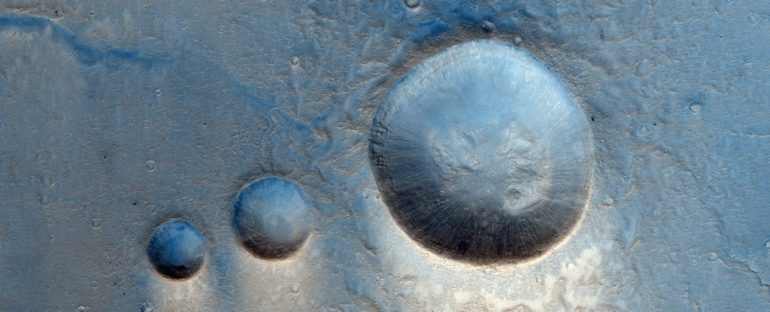On dusty, dry, arid Mars, the landscape is stark and bare. No oceans or lakes, no forests, certainly no cities. The result is a world almost utterly alien, its scarred surface exposed under an orange sky.
That means we’re treated to images from Mars orbiters that show us views like nothing we could see on Earth – like the image above of a volcanic plain, scarred with impact craters, taken in March by the ESA-Roscosmos ExoMars Trace Gas Orbiter.
The area seen here is the Lunae Planum, a transitional region between the northern lowlands and the Tharsis Montes volcanic complex, which is thought to be responsible for lava deposits over much of the area.
Impact craters in the Lunae Planum region. (ESA/Roscosmos/CaSSIS, CC BY-SA 3.0 IGO)
Images like these can help us understand the processes on Mars a little better. The craters that speckle the plain, including the three medium-sized ones that take center stage, occurred after the volcanic surfacing, excavating material from below the surface.
This means that we can obtain a glimpse into the Martian past. The larger craters, for example, show signs of layering around their rims that could be produced by successive lava flows, from a time when the planet was more volcanically active.
We don’t know whether Mars is still volcanically active today. For a long time, scientists thought it was as dead as a doornail, but recent evidence suggests that it might not be.
Studying disturbances in volcanic surfaces can help planetary geologists work out when the lava flows occurred, which in turn can help put together a volcanic history of the planet.
Because we can’t go to many places on Mars – there are currently two active rovers and the stationary Mars InSight lander – orbital images are one of the best tools we have for this work.
The ExoMars Trace Gas Orbiter’s main mission is atmospheric research (at which it’s doing a stellar job), but images like these are icing on the cake.
You can download the image in high resolution from the ESA website.



